Galicia: the most unspoiled green (and real estate) paradise
Galicia is not just one place, it is many: breathtaking natural landscapes, lush forests, wild coastlines, a unique historical and cultural heritage, with the Camino de Santiago forming the backbone of its trails and, of course, wines and gastronomy. A paradise that is increasingly attracting more and more customers eager to find a home that reflects that history.
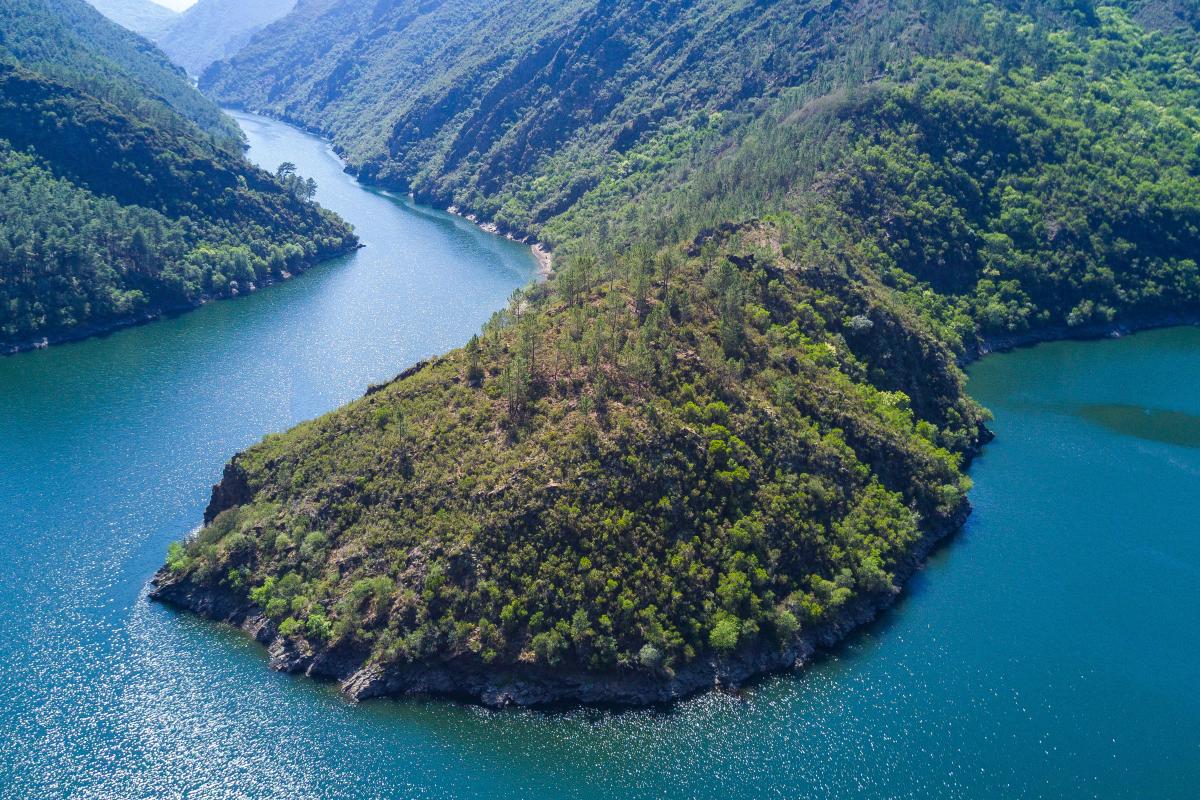
The growth in sales throughout northern Spain is widespread. In other words, although there are some locations where it is particularly noticeable, the reality is that from Galicia to the Basque Country, demand has been steadily increasing since 2021, especially in the prime sector.
Each area has its own peculiarities, particularly in the case of Galicia, which is the fifth largest region in Spain. Although it is bathed by two different bodies of water (the Cantabrian Sea and the Atlantic Ocean), its four provinces have a common thread: abundant nature and unique cuisine, among many other qualities.
In this article, we look at the areas where demand for second homes has grown the most: on the one hand, the Rías de Vigo, Pontevedra, and Arousa, known as the Rías Baixas; on the other hand, more urban destinations such as Santiago de Compostela and Pontevedra; and specific locations in the Rías Altas, such as A Coruña and Ferrol.
The Rías Baixas, a unique ecosystem
Galicia in general, and the province of Pontevedra in particular, are much more than just a climatic refuge. The “new tourists” know this and also come to the Rías Baixas for its beaches, its coastline, its gastronomy, its strategic location close to Portugal, or its proximity to the capital of the Camino de Santiago. Nor is there, at least for the moment, a feeling of tourist pressure comparable to that suffered by other coastal areas or some specific locations in the north (see our article on Cantabria).
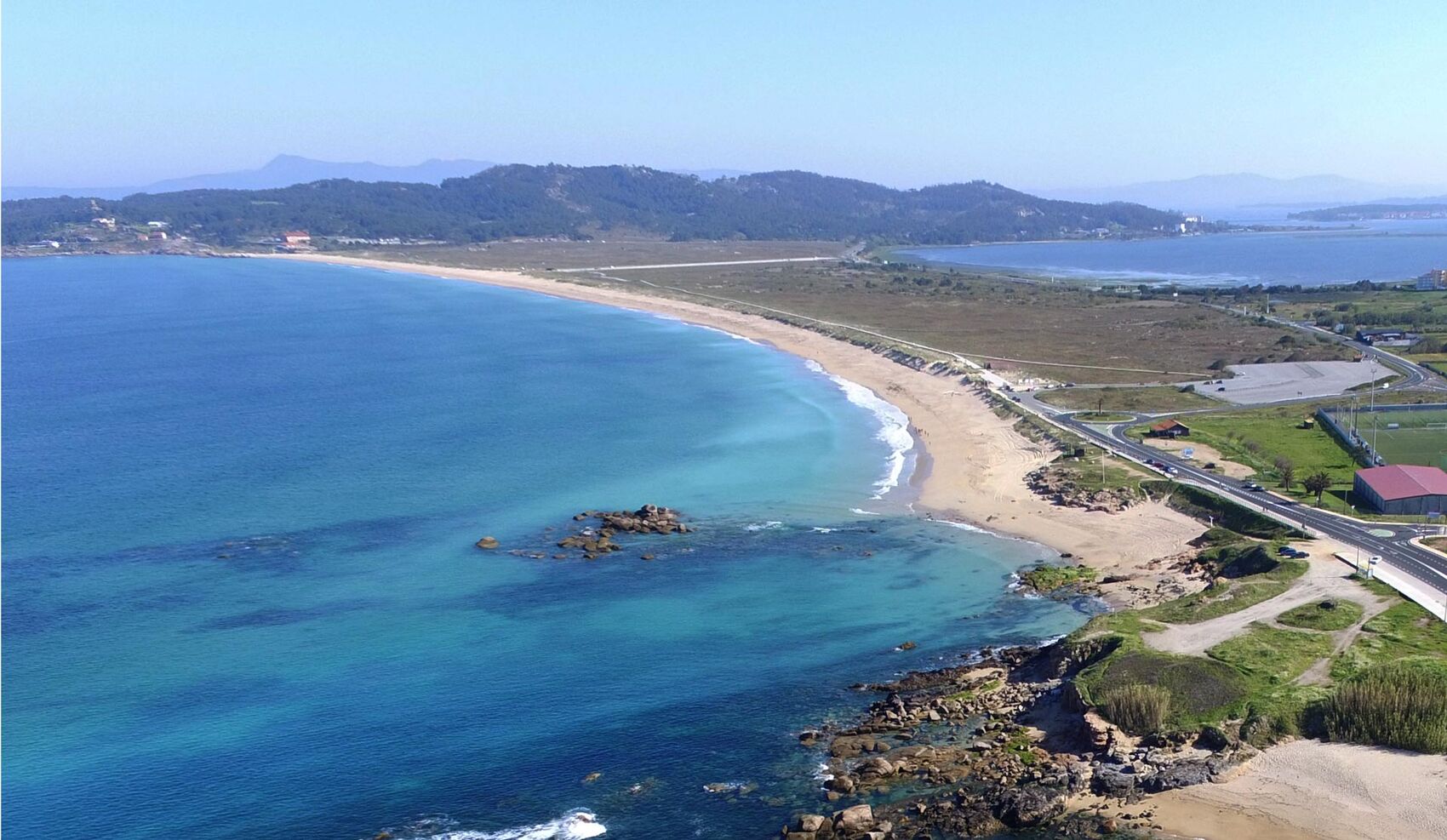
Until recently, the most sought-after destinations for urbanites were Sanxenxo and Baiona, known for their beaches and atmosphere, and Vigo, which combines city and beach life. The first two have welcomed large numbers of people from Madrid, Andalusia, and Portugal. But today, with a more diverse buyer profile and a premium segment that values privacy, less explored locations are becoming increasingly popular, provided they retain what these buyers desire most: soul and history.
This is because modernity in the 1960s and 1970s arrived in Galicia in a somewhat disorderly fashion, which was reflected in its construction, which was not always carefully planned, and in the widespread use of elements such as tiles, metal enclosures, and plasterwork that had little to do with the stone and granite of Porriño, which had been one of the hallmarks of the local identity.
For this reason, coastal towns such as Combarro, Muros, Noia, and Cambados, which still retain the charm of fishing villages, as well as granaries and other original buildings, have been highly sought after by buyers looking for a quiet and charming retreat.
Fortunately, however, there is now a much greater awareness of respect for the environment, demonstrating that new construction can respect it. This is the case with these four charming cabins made of local wood in a strategic location in Marín, in the heart of the Pontevedra estuary.
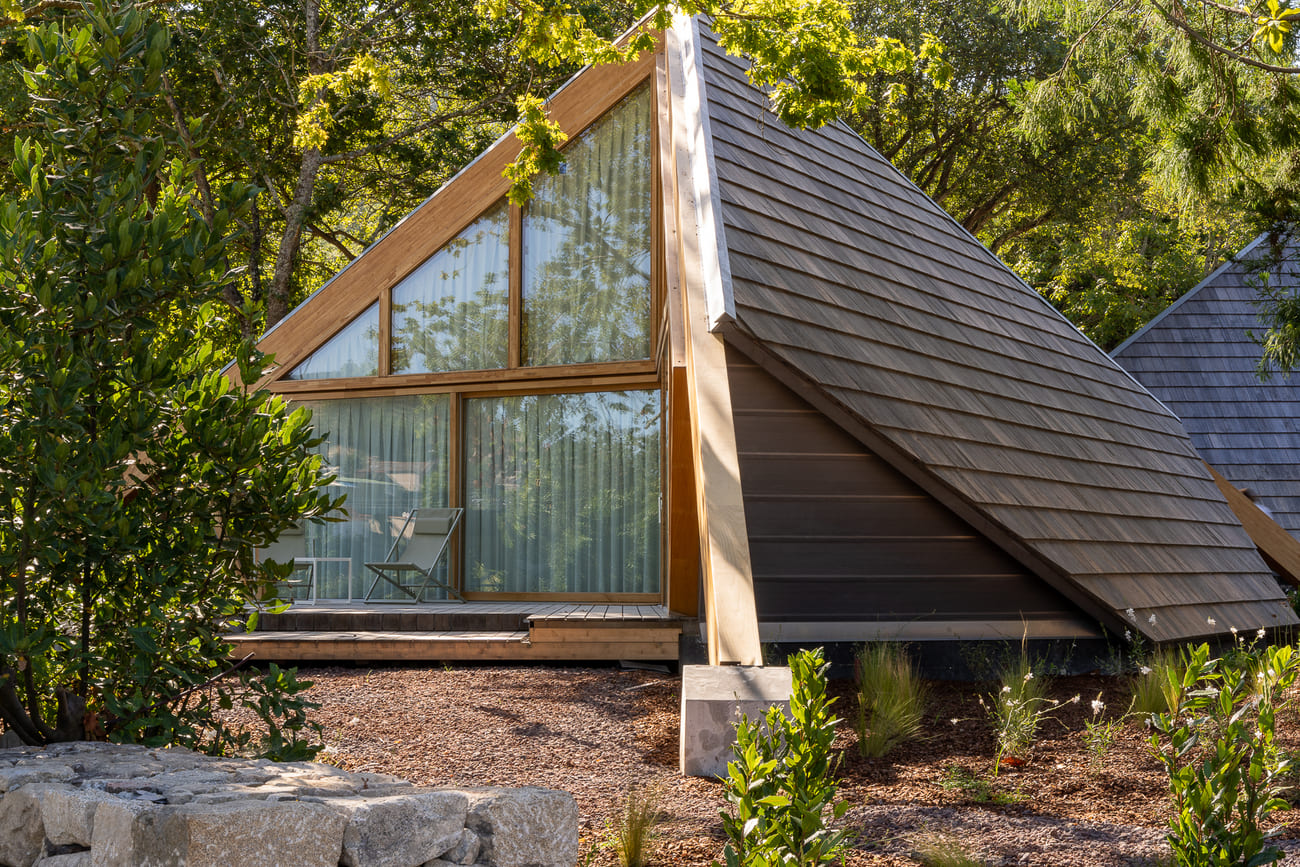
The design bears the signature of the prestigious Vigo architect Alfonso Penela, a leading figure in the contemporary reinterpretation of Galician architecture, who has conceived these cabins under a premise that is as poetic as it is emphatic: each structure embraces a tree. A statement of principles that translates into a design that respects the environment, enhances it, and inhabits it without invading it.
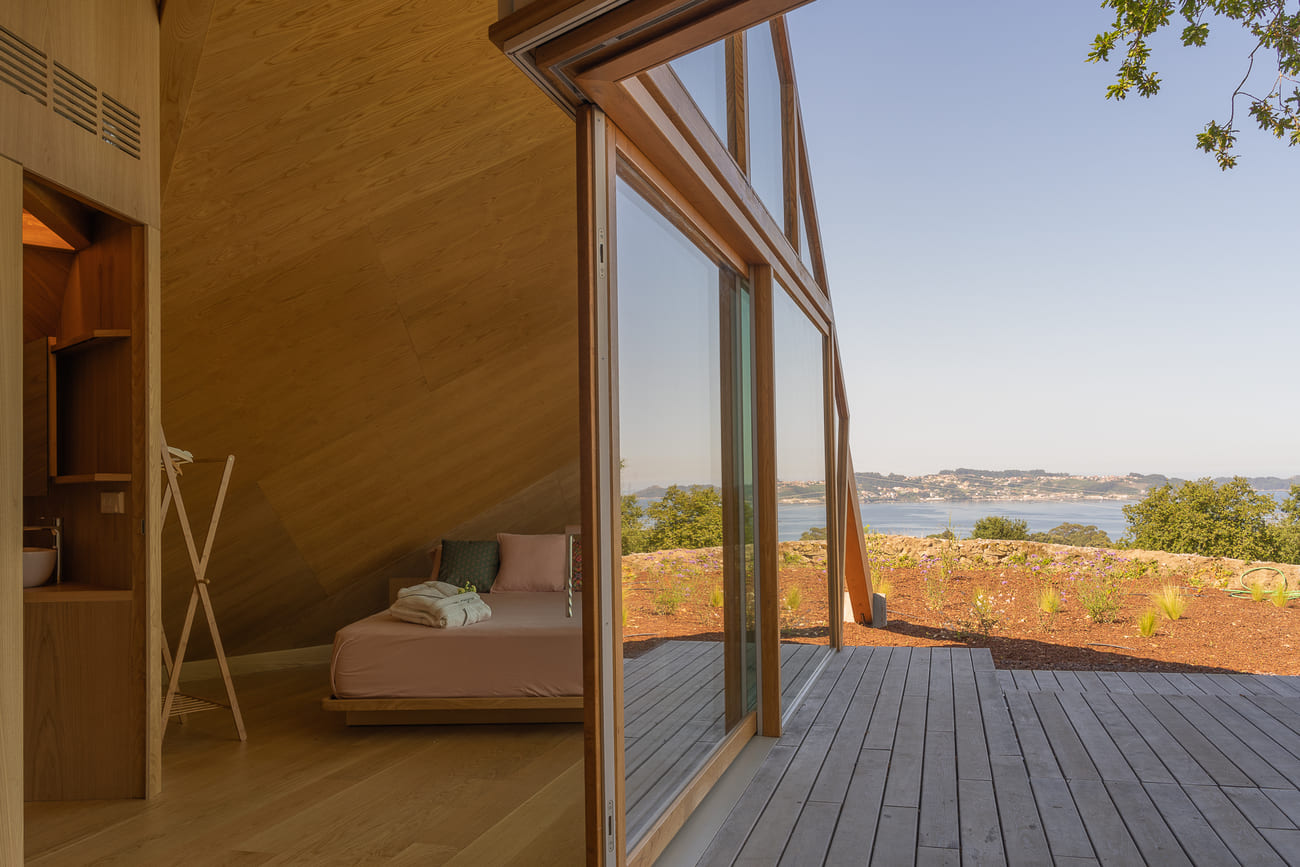
Using all four, they can accommodate up to 16 people and can be rented through our Travelers section.
A Coruña, the wildest part of Galicia, and Santiago, a global beacon
Due to its greater distance from other regions, the province of A Coruña has enjoyed less tourist pressure, which has worked in its favor. It is the rawest part of Galicia, with 93 municipalities steeped in the magic of its forests, legends, and spectacular nature. Emblematic towns such as Fisterre, Muxía, Noia, Betanzos, Pontedeume, Ferrol, and Cedeira stand out among many others.
But there is also a city, and not just any city: the city of A Coruña, which is very interesting from an urban planning perspective, with its iconic glass galleries bordering the marina, which are a jewel and part of the charm of this great city. And, of course, the capital, Santiago de Compostela, with its thousand-year history, where millions of pilgrims from all over the world flock every year.
Without a doubt, the most highly valued type of property is one that has maintained its original essence and tradition, but has been renovated to offer all modern comforts. This is the case of this beautiful 80-square-meter house in Lugar de Corbeixe, a farming village in A Coruña.
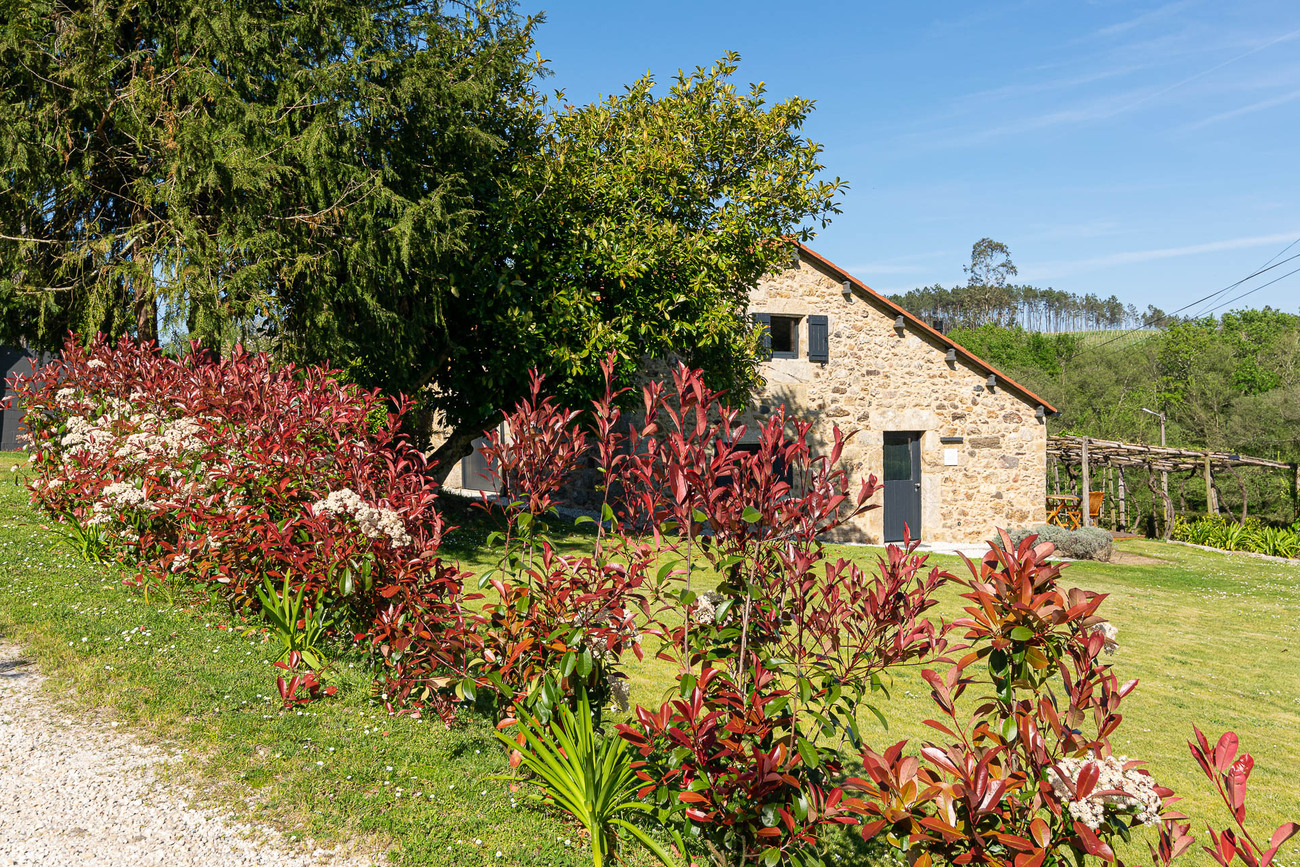
In the Ulla Valley, 15 minutes from Santiago de Compostela, its strategic location makes it the ideal base from which to explore every corner of Galicia. Its interior has been carefully planned and designed to achieve maximum functionality in a contemporary space, with Nordic touches in the décor that blend perfectly with the traditional old building.
It has a work area with fast Wi-Fi and a living area with a sofa bed, armchairs, television, and fireplace. The kitchen and dining room open onto the living room area. There is a bedroom on the upper floor, accessed via a charming restored wooden staircase. Perfect for a few days of rest or teleworking in the midst of nature, available for travelers.
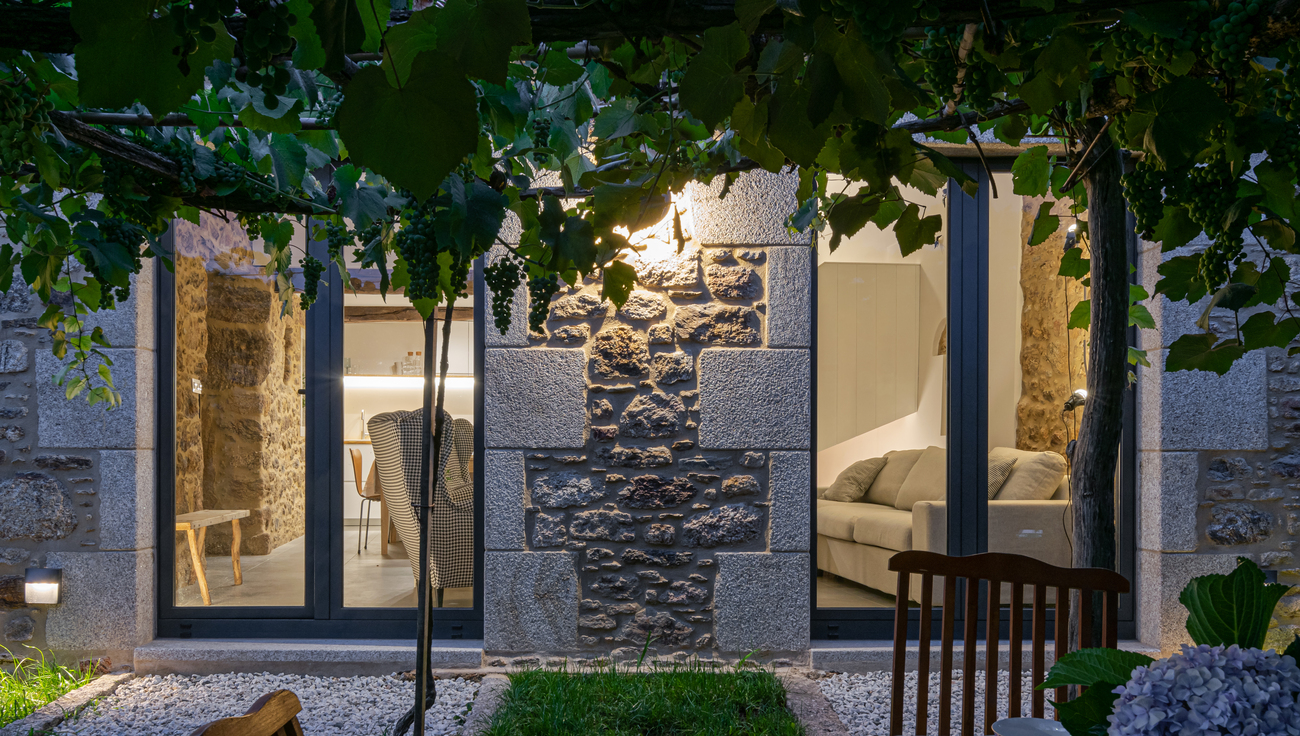
It is a curious feature of Galicia that it attracts a significant number of American visitors. On the one hand, the Galician origins of families who settled in America centuries ago continue to be a link and arouse curiosity, and on the other hand, the Camino de Santiago has become a cultural and tourist beacon.
Also, due to its proximity to the United Kingdom, several wealthy individuals have taken an interest in this province. Among them is architect David Chipperfield, winner of the 2023 Pritzker Prize. After years of renting small apartments, he decided to build a minimalist house on Corrubedo Beach, where he spends long periods of time with his family. For the British architect, accustomed to the noise of London and large international commissions, northern Spain is a place where he does not feel observed, as he himself has said, and he spends many hours sailing, walking, and cooking for his family.
It is true that contemporary construction can be a wonderful and plausible option if it is done sensibly, integrated and respectful of the environment. Such is the case with this wooden cabin in La Cabaña, located on land that offers views of the sea, the lagoon, and Doniños Beach.
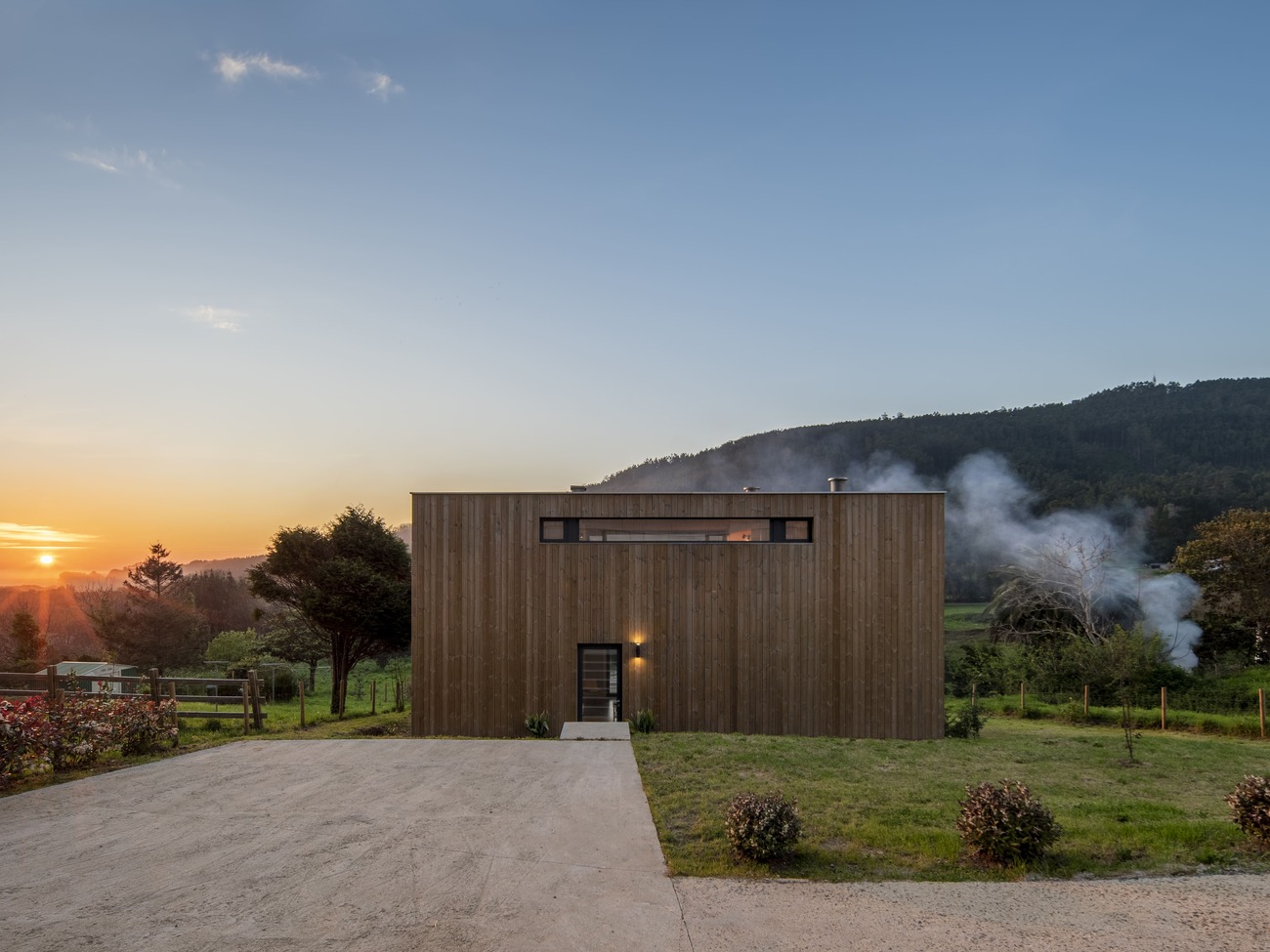
A 1,700 m² estate with a private garden and patio, discreetly built on which stands this 150 m² property, spread over two floors, with three bedrooms and capacity for 8 people. Available for travelers.
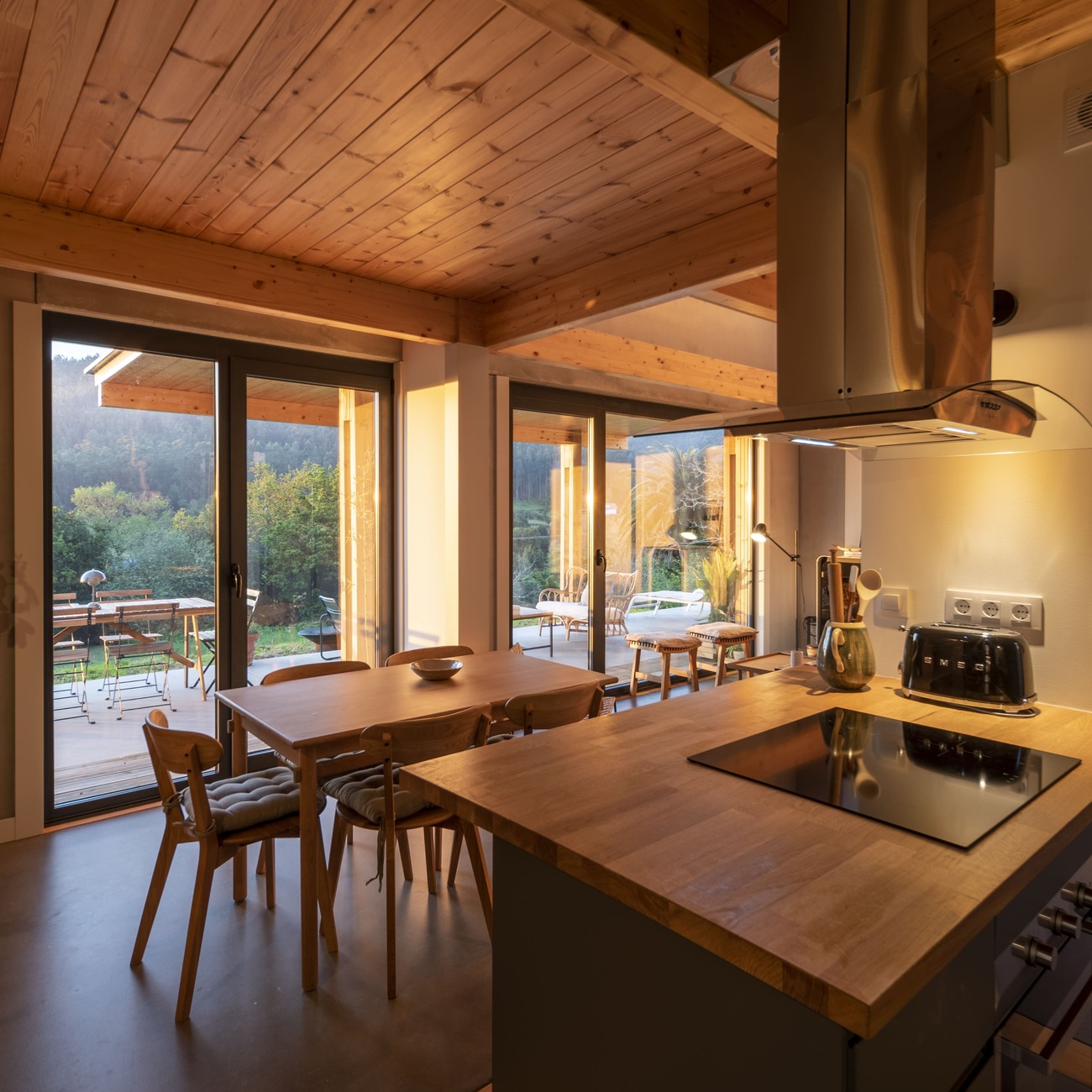
Where American interest will undoubtedly grow is in Oleiros, near the city of A Coruña, between the Betanzos and Burgo estuaries, because it has been chosen by actor Richard Gere and his wife Alejandra Silva as their summer destination for several years. The destination is no coincidence, as Alejandra’s family lives in this municipality, where they own properties near Bastiagueiro beach. Even so, the love that the actor has expressed for this place, which he considers a ‘paradise’, will undoubtedly help to put A Coruña on the map for possible investments by other celebrities.
Orense, the sum of so many unique details
It is the only province without a coastline of the four that make up Galicia, but it is nevertheless famous for its thermal tourism. The Ribeira Sacra is a stunning natural paradise, with wonderful views of the Sil Canyon from almost any point.
In Castrelo de Miño, the birthplace of Ribeiro D.O. wine, we find a complex consisting of three independent accommodations, carefully renovated by a single owner and with an absolutely cozy interior with all the modern comforts.
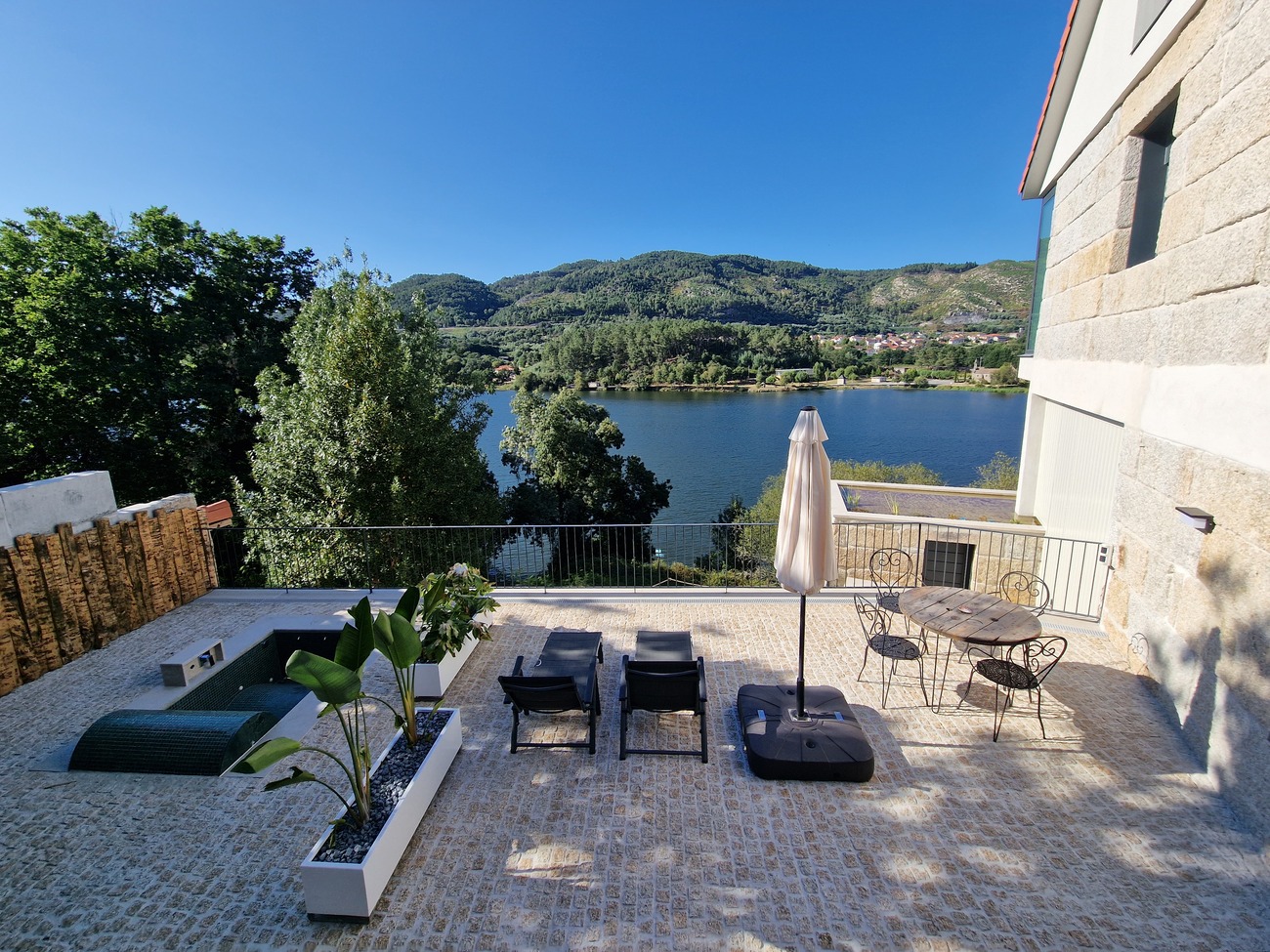
The views of the Castrelo de Miño reservoir and the banks of the Miño River are spectacular. Each apartment is named after one of the region’s grape varieties and has a different capacity.
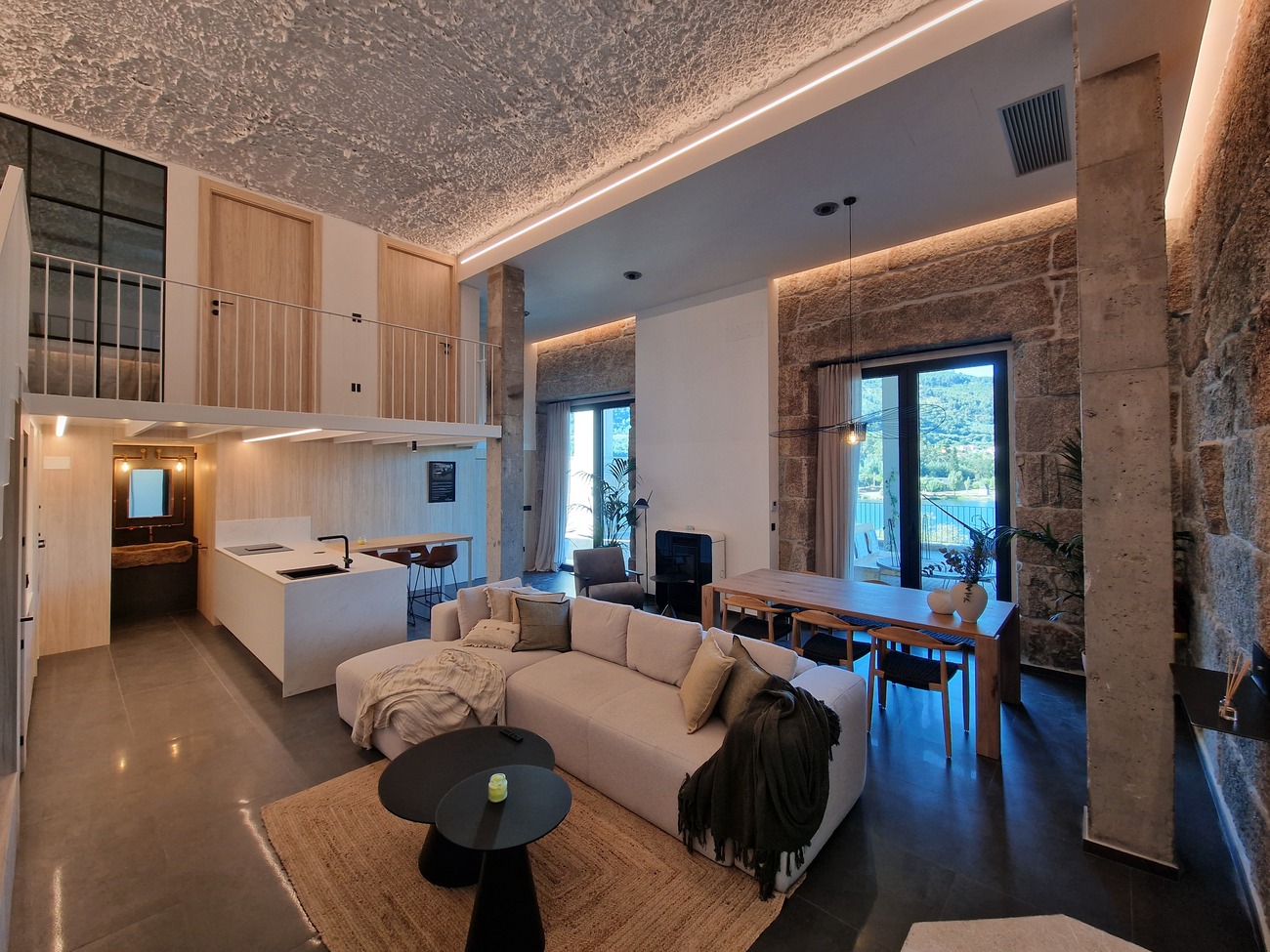
Treixadura sleeps six people in three bedrooms. It is spread over two floors and has ceilings almost five meters high. Loureira also sleeps six people and stands out for its total accessibility, with no stairs and a bathroom adapted for people with reduced mobility. Finally, Caíño, designed for four people, has two bedrooms and views of the river. They can be rented through the travelers section of our website.
In this province, we find one of the best examples of how the wealthy often shy away from the coolest destinations of the moment, preferring to opt for hidden gems. The town of Avión is known as the “Galician Marbella,” despite enormous differences, the first and most obvious being that it has no beach. It is an inland village, located between mountains in Ourense, which has attracted millionaires such as Carlos Slim precisely because of its privacy and simplicity, far from the limelight. And it is not the only one. Long before, Julio Iglesias wanted to honor his father’s homeland by purchasing a house in the region of O Carballiño, specifically in the village of Villarino.
Lugo, the charm of humility
The city of Lugo often appears in agency and media rankings as one of the most affordable provincial capitals to live in. We could say that this more humble character extends to the entire region, but that should not detract from its appeal.
In the northern and coastal regions (A Mariña), we find charming towns such as Mondoñedo, Foz, and Burela, the latter two of which are also a surfer’s paradise. And in the easternmost part of A Mariña, Ribadeo is an essential stop on the classic Camino de Santiago pilgrimage route.
Evolution and prices
Compared to other autonomous communities in northern Spain, such as Cantabria and Asturias, Galicia had shown more moderate prices per square meter until a few years ago. However, according to data from the Galician Notarial Association, between April 2024 and 2025, the Galician community saw a 14.4% increase in home sales, a 24.3% increase in loans granted, and a 19.1% increase in prices per square meter. In other words, although demand started somewhat later, it has done so in a remarkable way, so it is to be expected that it will continue along these lines.
Visitors to Galicia in search of a second home have also been very loyal (something that is widespread in tourism in northern Spain) for decades. Some of these domestic customers, after years of renting for short stays, have now taken the step of buying, given the greater availability of properties on the market. But the reality is that in the high-end market, it is difficult to find homes that meet the requirements of a good location, as well as the generous square footage and historical essence that we mentioned. That is why these buyers turn to consultants like us to find them the type of property that often does not appear on real estate portals.